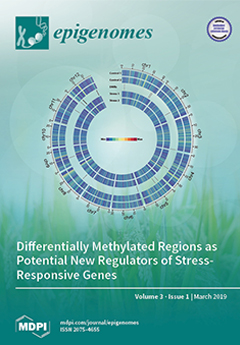Open AccessFeature PaperArticle
An Orphan CpG Island Drives Expression of a let-7 miRNA Precursor with an Important Role in Mouse Development
by
Martha V. Koerner, Kashyap Chhatbar, Shaun Webb, Justyna Cholewa-Waclaw, Jim Selfridge, Dina De Sousa, Bill Skarnes, Barry Rosen, Mark Thomas, Joanna Bottomley, Ramiro Ramirez-Solis, Christopher Lelliott, David J. Adams and Adrian Bird
Cited by 2 | Viewed by 4155
Abstract
Most human genes are associated with promoters embedded in non-methylated, G + C-rich CpG islands (CGIs). Not all CGIs are found at annotated promoters, however, raising the possibility that many serve as promoters for transcripts that do not code for proteins. To test
[...] Read more.
Most human genes are associated with promoters embedded in non-methylated, G + C-rich CpG islands (CGIs). Not all CGIs are found at annotated promoters, however, raising the possibility that many serve as promoters for transcripts that do not code for proteins. To test this hypothesis, we searched for novel transcripts in embryonic stem cells (ESCs) that originate within orphan CGIs. Among several candidates, we detected a transcript that included three members of the
let-7 micro-RNA family:
Let-7a-1,
let-7f-1, and
let-7d. Deletion of the CGI prevented expression of the precursor RNA and depleted the included miRNAs. Mice homozygous for this mutation were sub-viable and showed growth and other defects. The results suggest that despite the identity of their seed sequences, members of the
let-7 miRNA family exert distinct functions that cannot be complemented by other members.
Full article
►▼
Show Figures






